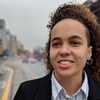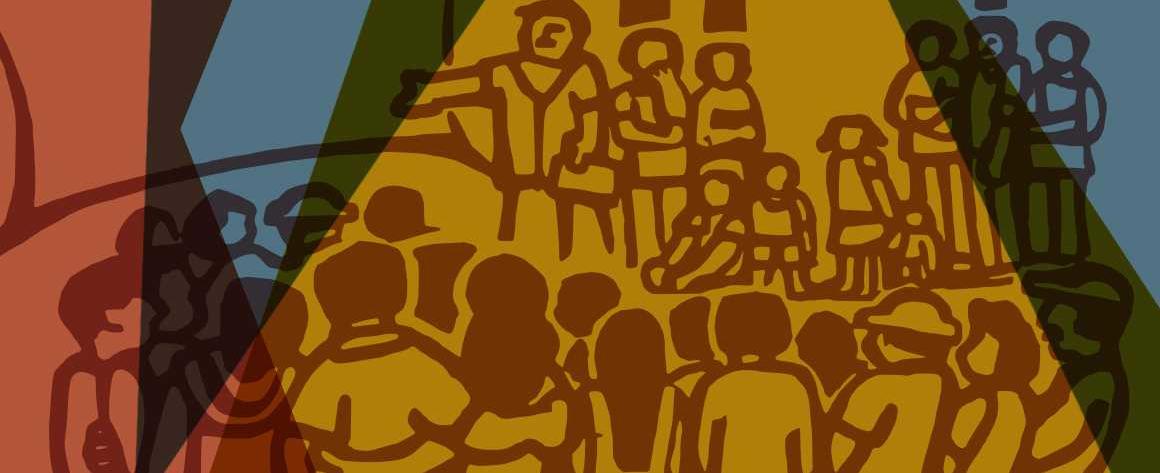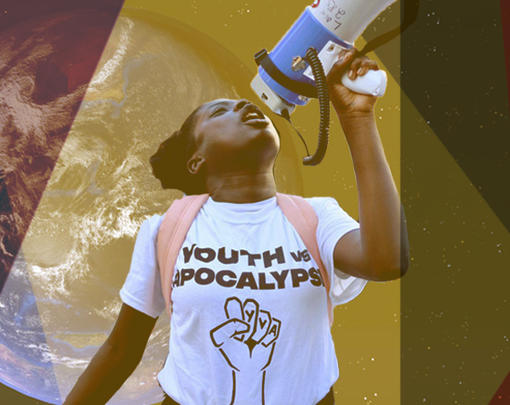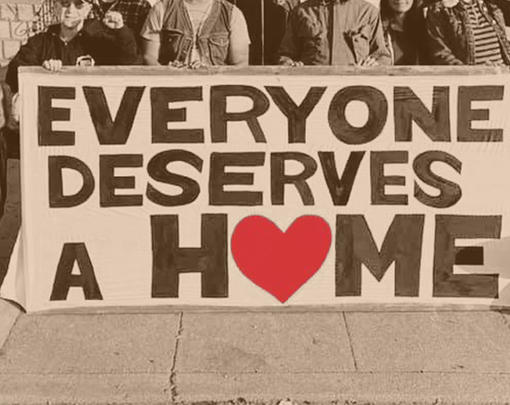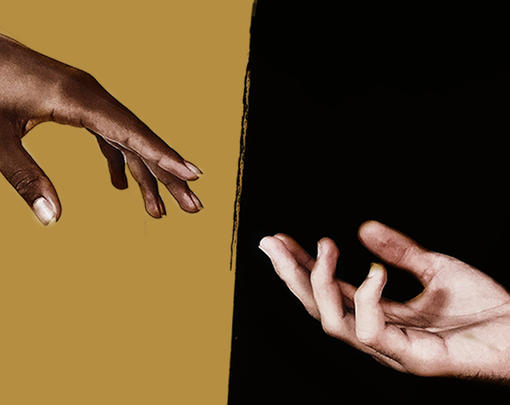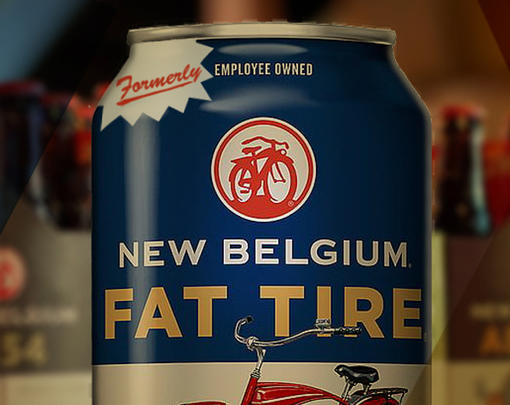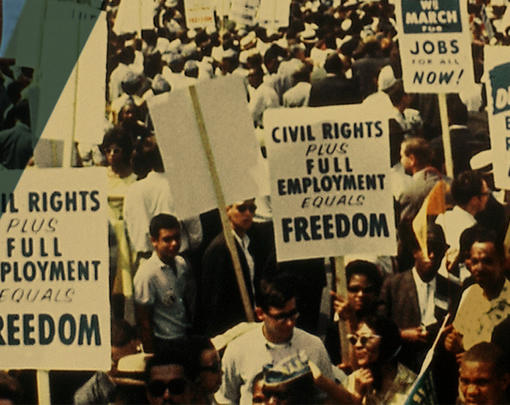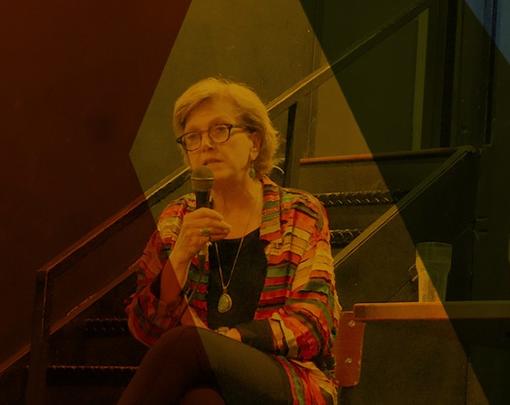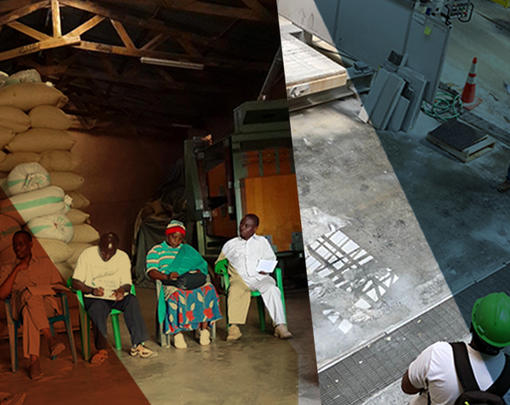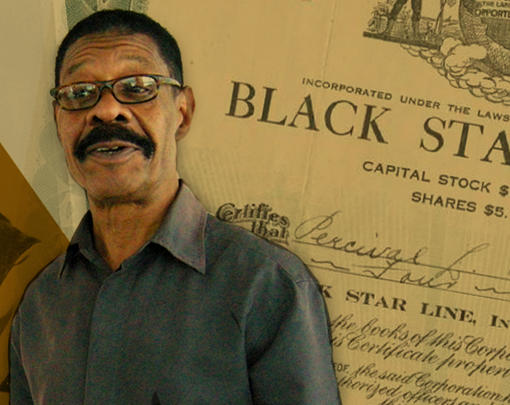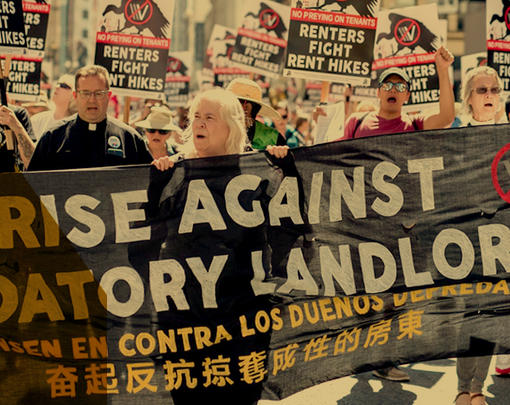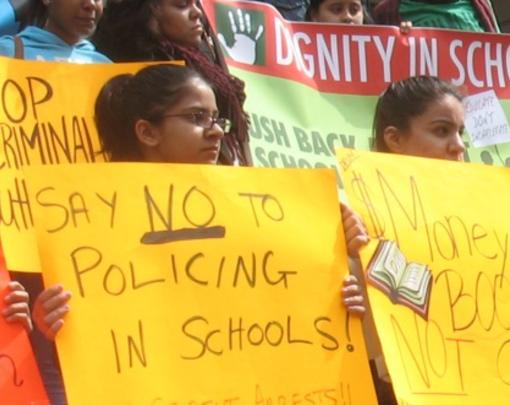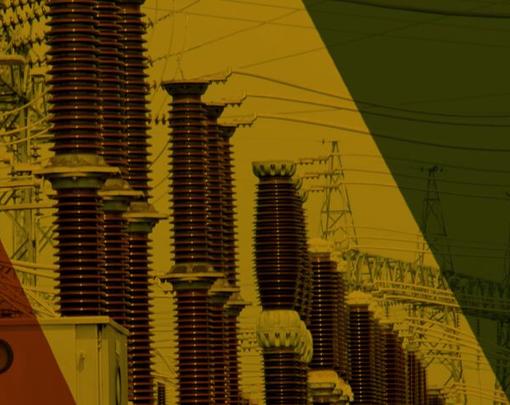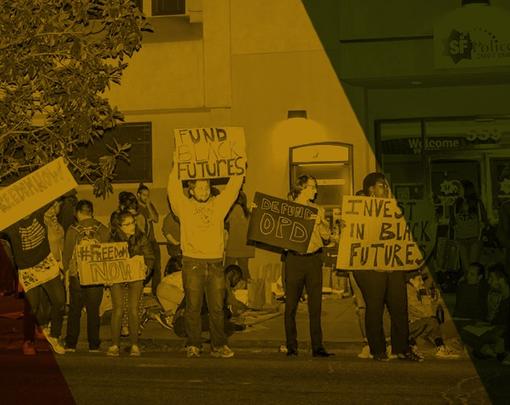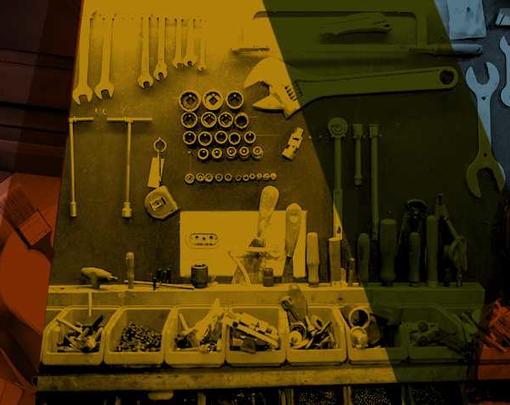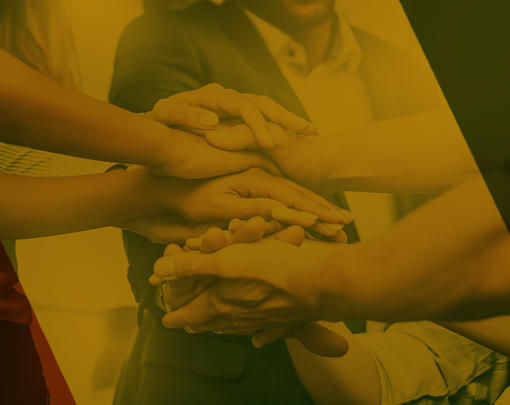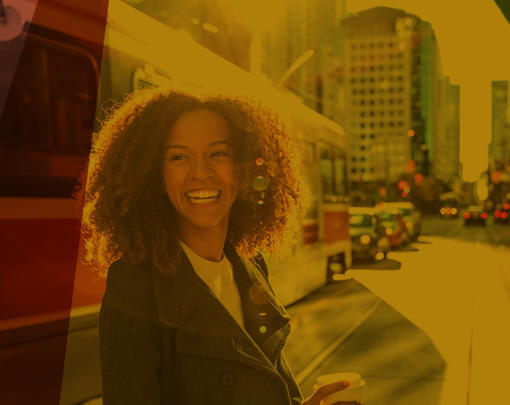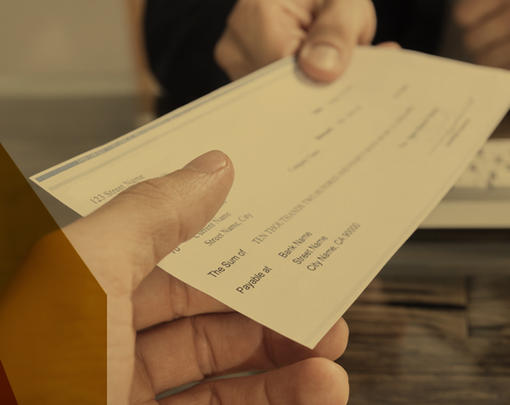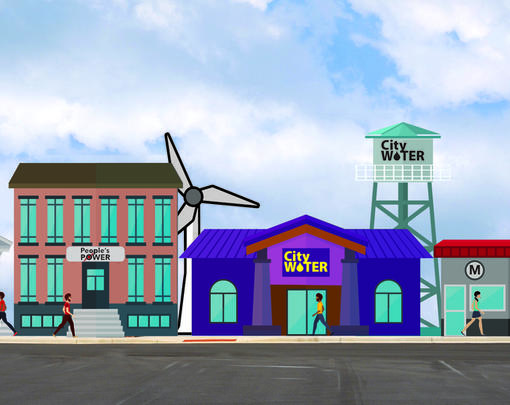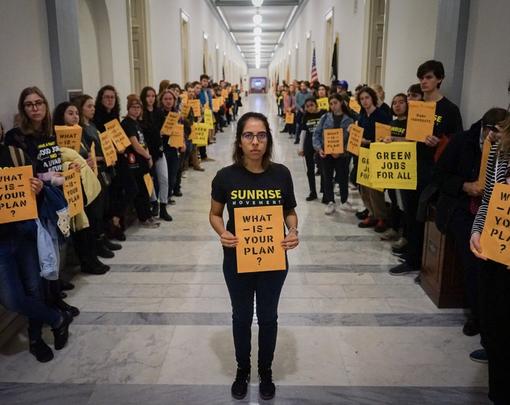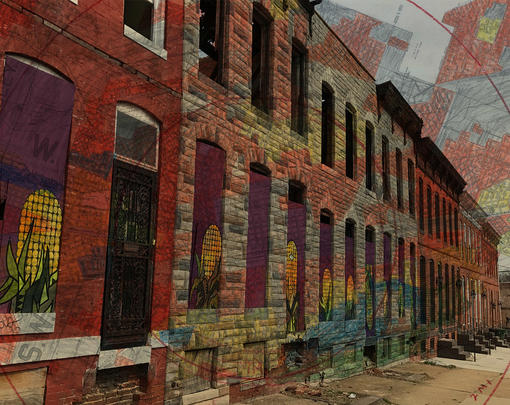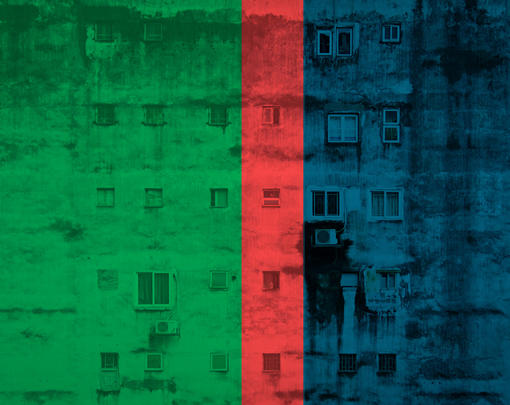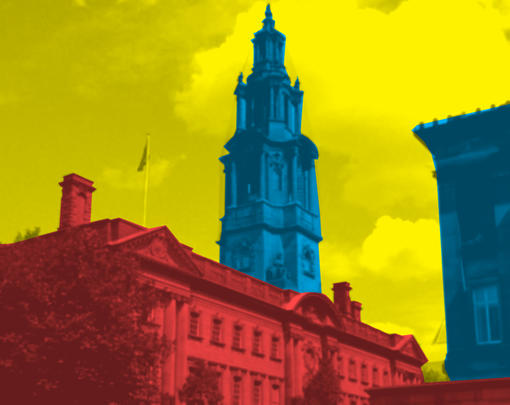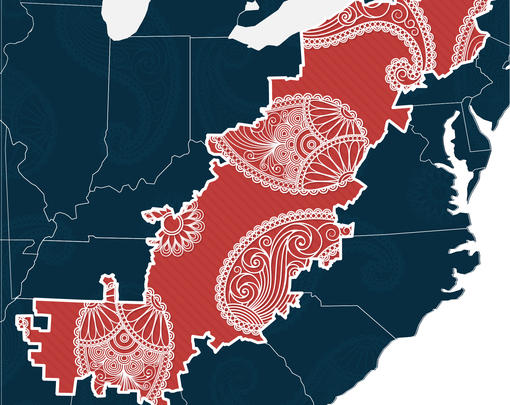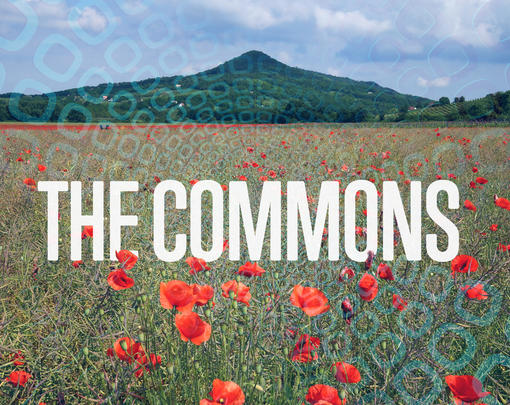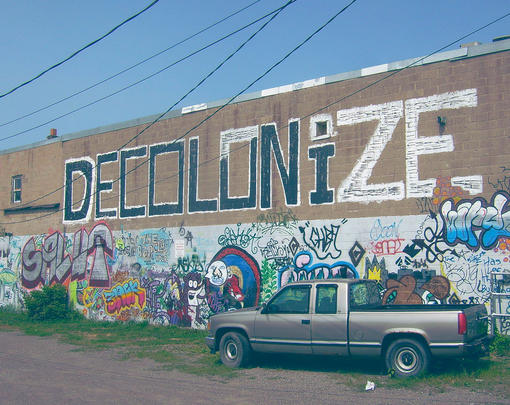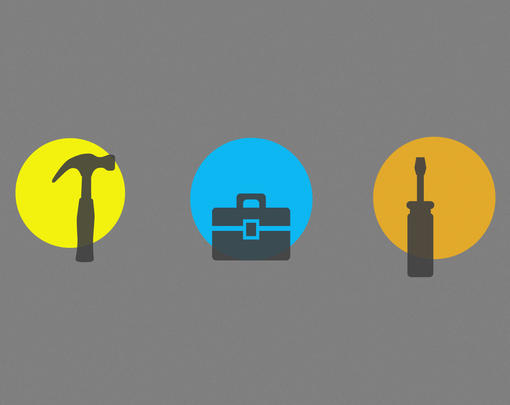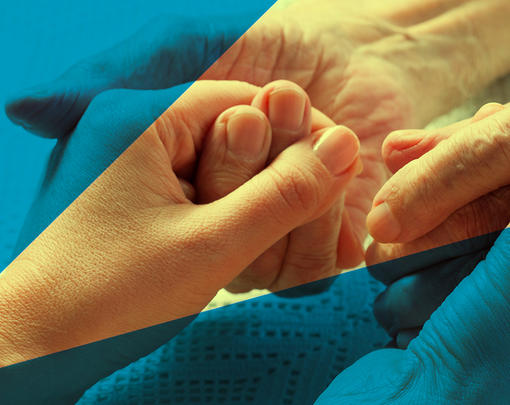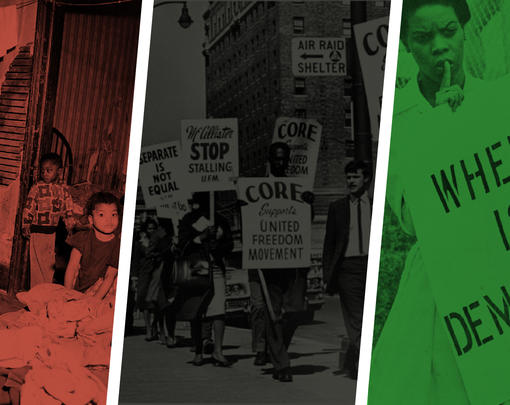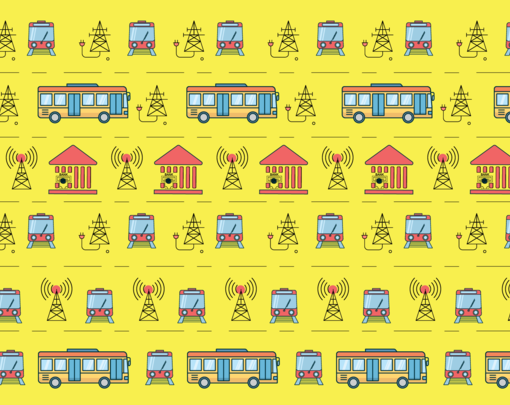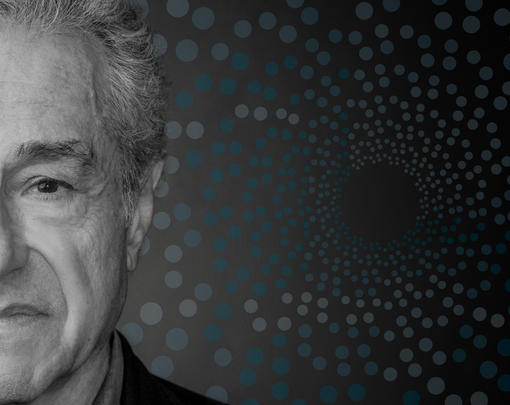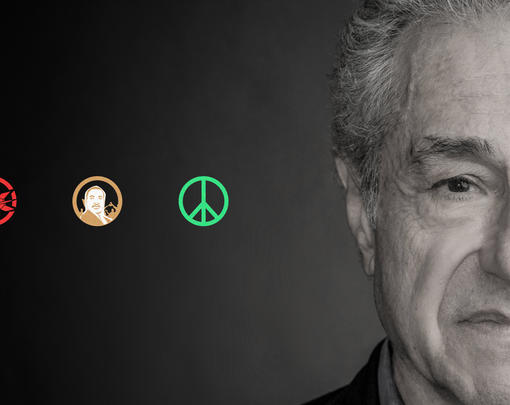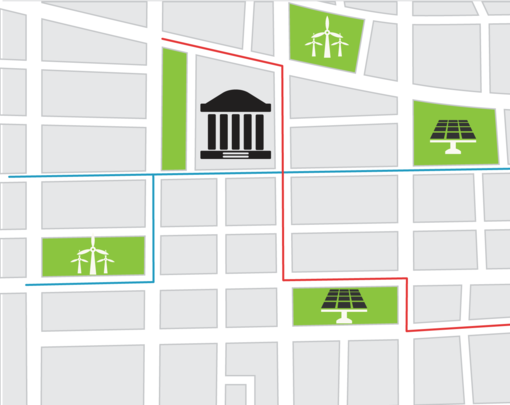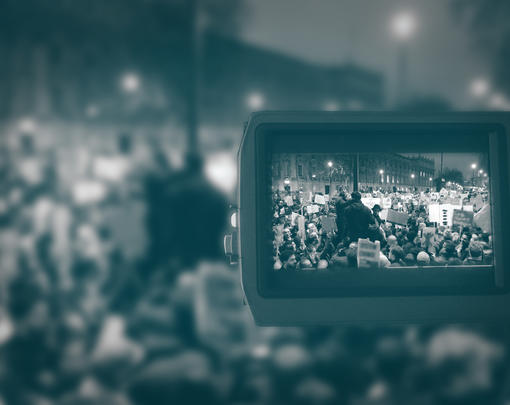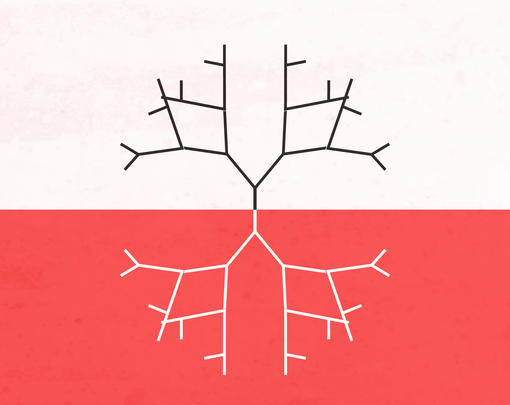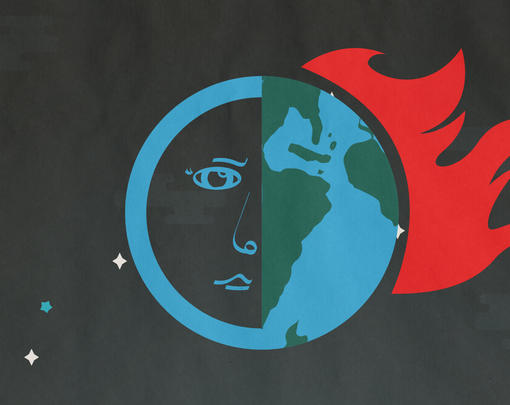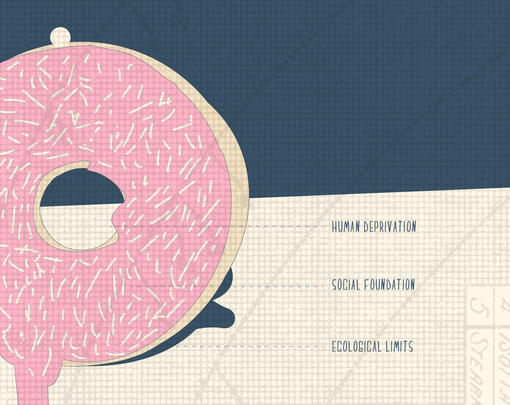This week we are talking about deepening democracy in our communities through participatory budgeting and participatory decision making more broadly. We’re joined by three great guests: Shari Davis of the Participatory Budgeting Project, Lorian Ngarambe of the Rochester-Monroe Anti-Poverty Initiative, and Yale University Ph.D. student Alexander Kolokotronis.
The Next System Podcast is available on iTunes, Soundcloud, Google Play, Stitcher Radio, Tune-In, and Spotify. You can also subscribe independently to our RSS feed here.
Adam Simpson: Welcome to The Next System podcast. I’m your host, Adam Simpson. Today we’re talking about participatory budgeting and, more broadly, broadening the scope of democracy in our communities and movements. We have a great group of guests lined up, starting with Shari Davis, co-executive director of the Participatory Budgeting Project. Shari, welcome to the program.
Shari Davis: Thank you so much.
Adam Simpson: We also have Alexander Kolokotronis, a Ph.D. student at Yale University, and founder and board chair of the Student Organization for Democratic Alternatives. Alex, thanks for joining.
Alexander Kolokotronis: Thanks for having me.
Adam Simpson: And we also have Loriane Ngarambe, a community engagement specialist with the United Way. Loriane, it’s great to have you with us.
Loriane Ngarambe: So excited to be here.
Adam Simpson: Shari, can you start us off with just a brief intro into participatory budgeting. What is it? How does it work? What are some of the benefits and limitations?
Shari Davis: Sure. Participatory budgeting is something that gets me really excited. I’m a person who worked in local government in the City of Boston, Massachusetts for just about 15 years overseeing youth services. While I had seen a lot of really interesting and innovative approaches to community engagement, participatory budgeting was an opportunity to explore that in a way that I hadn’t seen before. My first introduction to this was in my role overseeing youth initiatives. The mayor coming to me saying, “I really want young people to play a leadership role, not just a figurehead role, in how I govern and in how I make the City of Boston better.”
From that initial introduction, I learned that participatory budgeting is relatively new in the United States, but, globally, it’s been around for several decades. That said, the way that we practice it in the US is also a bit different. The first thing that happens, and my favorite part to ensure transparency, is that community members come together to write the rules that will govern a participatory budgeting process. Then we enter the idea-collection phase, where we collect hundreds, if not thousands, of ideas on how to spend a pot of money to make a community better. We’re not talking about the entire public budget; we’re talking about identifying a space, a line item in the budget, where we can make some decisions together.
After we collect those ideas, we go into the next phase, maybe my most favorite. This is proposal development. This is where community members come together and form a couple of committees to review all of the ideas that have come in based on need, feasibility, and impact. This is an important piece around ensuring equity, not only for the projects that come in but the projects that make it onto the ballot. They work alongside agency or institutional staff to distill and vet those projects so that we have final projects for the ballot. Nothing makes it on a participatory budgeting ballot unless it can really happen if it gets enough votes.
We enter the almost final phase then, the voting phase. Unlike traditional local or national elections, the voting phase is usually a bit longer. It can last a week. And the vote goes out to where people are. That steering committee, and the folks that have been involved in the process, really think about who is typically left out, and how do we really center their engagement in this process, so that their voice is heard. After the vote phase, the projects with the most votes are implemented, truly enacted in the community, until that pot of funds runs out. Then the process begins again the following year, after an evaluation.
When a community, a school, an institution adopts participatory budgeting, it really marks a change in the way that they govern and a change in a way that they have a relationship with their constituency or broader community. That’s the quick-and-dirty overview.
Adam Simpson: Wow, so much to dig into there. Thank you for that, Shari. In particular, you mentioned that participatory budgeting isn’t a new idea. I’ve actually read in some of your work, Alex, that the tradition of participatory democracy having both international indigenous roots. Can you say a bit more about this and how you view participatory budgeting fitting into that historical tradition?
Alexander Kolokotronis: Sure. Traditionally, I think we connect these things to direct democracy, and we think of ancient Athens. But I think a lot of recent work, in the last few decades, has been connecting up this notion around participatory democracy to the Iroquois Confederacy here in the United States. Most recently, in explicit work on participatory democracy, Michael Menser really foregrounds this in his beginning chapters of his book, We Decide. But on through that, into history, we see a lot of other instances of participatory democratic praxis on a wide scale. So, of course, there are the traditions I’ve just mentioned, but then we see larger cases in the 20th century, such as the Spanish Revolution in the 1930s. Then, of course, the coining of the term, participatory democracy, in the ’60s by Students for a Democratic Society in their Port Huron Statement, which itself has a lot of international renown.
Often, if I mention that some of the things I’m looking into with my own research include SDS, Students for a Democratic Society, I’ll hear people from various parts of the world say, “The Port Huron Statement and participatory democracy.” But its practical roots really, really lie in different areas of the world, including right here with the Iroquois Confederacy.
Adam Simpson: Now, there are a variety of ways that participatory budgeting can be deployed. In Loriane in Monroe County, New York, this was part of the antipoverty initiative that you were involved in, which incorporated a participatory budgeting process. What do you think was different about the outcomes, and the initiatives, of that process, as opposed to the outcomes that would have been advanced from a more top-down process, either from city leaders alone, or social impact investors, nonprofits, et cetera? What do you think was different about the fact that this process to alleviate poverty in the Rochester, Monroe County area because of the participatory nature of it?
Loriane Ngarambe: This is the thing I always use whenever I’m talking about communities, or other community engagement efforts over at RMAPI: It’s always that the people closest to the problem are closest to the solution. And for so long, any time people are talking about poverty, and strategies, and solutions you always have this top-down approach. I look at this through a context of content experts, and context experts. And for so long, you’ve always had content experts, people who understand poverty and the issues that people are going through, because it’s the work that they do or, maybe, it’s what they studied. But context experts are those people who understand poverty because it’s literally their lives. They understand it through, and through, because it’s not just a nine-to-five thing for them, right?
Adam Simpson: Right.
Loriane Ngarambe: When they go home, they still have to deal with the poverty. At night, they deal with it when things are good. When things are bad, they understand it at a deeper level. A PB process really allowed an opportunity to see just what happens when you give these context experts an opportunity to really tell you what makes sense for them, right?
Adam Simpson: Right.
Loriane Ngarambe: The PB process allowed for ideas to come up that could be sitting at tables for decades and an idea like 24-hour daycare, that was one idea that came out a couple of times when we’re doing idea collection. It’s just like, “Wait, why isn’t that something that happens more often?” You have A, B, and C-shift jobs, but when you think of daycare, it’s usually for people who are working A-shift. But then there’s all these jobs that are available, and people, especially single mothers, aren’t able to take advantage of them, because they don’t have something like 24-hour daycare, where they can be secure on where they’re leaving their child. It’s things like that, that make the PB process make sense because they’re able to bring ideas and propose solutions that a content expert may not think about, because their understanding to the problem is limited to their experience.
Loriane Ngarambe: So PB just allowed us to really highlight what happens when you co-create solutions with community, rather than come up with an idea, a creative solution, and then present it to the community that has to live with the consequences of whatever decisions are made. So PB just allowed us to highlight that, and it’s really given us a lot of momentum, and energy, and buy-in from the community, as well, too. Now, you have people who then, as part of this process, that say, “We want more. How can we be more involved? What are more opportunities where we can really let our voices shine through?” And it’s just been an incredible experience for us.
Adam Simpson: That’s something I want to ask about directly. I think Shari mentioned a little bit what the process of participatory budgeting looked like, but I’m interested, particularly, in how you get people involved and engaged. I know that a lot of people, they have work, they have, as you mentioned, childcare, they have so many duties going on. Did you find it difficult to get people engaged? What were the strategies you employed there? In your experience, were people really eager to get involved?
Loriane Ngarambe: The main strategy that we used, that was really important, was meeting people where they were at, and not making this be an additional thing that they have to do. For instance, in idea collection, just getting out there and getting people more informed and engaged with what was going on. We would go to places like our Department of Human Services, where people are going to be sitting there for hours anyway to get their benefits or go to their appointments. So, instead of making a meeting, later on in the evening, where they have to find their way there, meet people where they’re at, go to schools, go to libraries, go to rec centers, go to churches, meet people where they’re at. Identify your key communities’ members, people who already have those relationships, people who will be advocates for what’s going on.
It’s a ripple effect, essentially, right? We’ve identified our 20 key people who really understand what PB is and are really for it. So they start going onto their networks and that’s, really, how the engagement bloomed, how the engagement grew. Then you’d have people hitting up our Facebook page, people reaching out to us because their cousin, who goes to their church, told them about this thing that they’ve been taking a part of. That’s really how we were able to get that engagement going. It wasn’t because of what me and my colleague, Graham, are doing. It was more about the people who understood this for what it was and were passionate about it, and so they were looping in their neighbors, their friends, their family. That’s really how the engagement happened.
Then just meeting people where they’re at, mitigating barriers. If we knew that childcare was an issue, then we made sure we had childcare available at a meeting that we had. We made sure we had food. We had giveaways, if people needed it, just to incentivize people to be able to get there, so it’s worth their time, essentially. I don’t want you to have to leave your kids to come participate and be engaged; bring them with you. We’ll have things for them to do, as well, too. Just meeting people where they’re at and being cognizant of the barriers they need to be facing and how you can help mitigate that. That was really important for us.
Adam Simpson: Wow. That sounds like a really amazing process. Shari, could you say a little bit about this and your experience? What do you see as the most successful strategies for getting the community engaged in these participatory processes?
Shari Davis: Well, one thing I want to just underscore is this principle that was mentioned before, and that’s around content and context expertise. I often say, “If I were to build a building, I would get an expert.” I would go get an architect because I don’t want the building to fall down. So, if I’m going to build a healthy community, I need experts to do that. I need people that live, walk, breath, and exist in that space on a regular basis. When we’re infusing their ideas, impact, and, really, voice, we’re able to build communities that are responsive to generations to come. I think that’s a really important piece here.
In terms of what we’ve seen work, and how this really works is, is centering those folks—who now we’re turning to as experts, and have always been experts and leaders in their own right. But if we’re going to center their engagement, we have to design the process with them, and not for them, and that’s why this steering committee component is so important. If we want single parents, or parents period, to participate, then we have to really think through childcare, times that we’re meeting. If we want young people to be in the room, then we probably can’t meet at 10 a.m. on a Tuesday. These considerations and the design process are essential. And that’s not me, Shari, or other members of PBP, that make those decisions. It’s the important folks that are on the ground, the folks that work in government, but especially those that are of the community that we’re trying to engage in a participatory budgeting process, really need to be at the helm of that design.
That’s what we’ve seen work in Oakland, where there’s no minimum voting age, anyone of any age, as long as they can interact with the materials, can participate. That’s what we’ve seen work in the City of Boston, where young people reported being more likely to engage in their community or being more likely to vote in a local or national election, as a result of participation. That’s what we saw in Phoenix, Arizona, where the entire school district engaged in a participatory budgeting process. And, last year, nearly a thousand of those young people that engaged in the PB process also registered to vote in local and national elections.
That’s what we’ve seen be a big piece of success is making sure that community, and those that are representative of their community, are really involved in the design process early, and in a way that they can make some decisions.
Loriane Ngarambe: Just to add to that, real quick. Here, in Rochester, we have a community advisory council. This is made up of community members who have decided to take on that extra time to really be involved with what’s going on, and provide input and guidance to the solutions and programs, and conversation, that are being had around what’s going to be happening with our communities. They played a really important role in the education part of introducing PB to the community. We brought it to them. We explained what it was to them, and they helped with the creation of our steering committee, and getting the word out there. Just to back up that statement, that was a huge, huge component of this, as well, too for us.
Shari Davis: I think you were touching on something that’s super important, and I know Alex can attest to this too. Often times we see councils and engagement strategies, and the councils may work, sometimes they’re a bit defunct, so participatory budgeting can be a way to really build robust advisory council level support. And, to your point, really allow them to infuse the beginning stages of planning that lead to the steering committee creation. And, in the City of Boston, we saw that with the Mayor’s Youth Council. They became huge ambassadors and key to the success of participatory budgeting, and really ran this process, and continue to now. I know that’s true, in terms of what Alex has seen, on the university scale, as well.
Alexander Kolokotronis: Yeah, to add to that. At the university scale what we’ve seen is—and you’ll find this again; this is another product of the ’60s—so many schools have a series of advisory committees in every aspect of the school structure, in terms of making school policy, or making recommendations for school policy. What we found, when we were doing our participatory budgeting process at Queens College, was that there were all these committees for different things, related to finance, related to buildings and grounds, related to all these things. As we looked through the lists, nearly all the students’ seats were vacant. It really astonished us, because it was clear that in a school with 20,000 students, there was an opportunity there and that no one, nearly no one, was taking up this opportunity to push things forward.
At the same time, we were recognizing that these are advisory structures and, after all, we, ourselves, are pushing for a process where we actually had decision-making power and weren’t simply being shuffled off into advisory seats that we were afraid might not affect change. But the result in having a participatory budgeting process is that people felt anchored, and felt able to try out, maybe, also sitting on some of these advisory seats, and, maybe, also having that feedback into the participatory budgeting process itself at Queens College.
The effect has been, over the last few years, that students have consistently found certain committees are really great to work within and are able to push things that sometimes may spill out of the PB process. For example, we have, at Queens College, a lot of technology projects have been pushed, rather simply having those projects having funds allocated through PB itself, they’ll be brought into the technology feed committee and will be pushed that way. We’ve seen, in that case, a lot of spillover effects in terms of the preexisting advisory structures and how PB not only provides people with the confidence to step up into positions in those councils or committees but also brings in the information and all the different perspectives that are accumulated through PB into those advisory structures themselves, affecting change in a lot of different ways.
And that’s what we’ve seen, where projects have been, ultimately, taken up and have been funded well beyond the PB process itself at Queens College.
Adam Simpson: I’m really interested in what your views are, all of you really, on participatory processes at different layers beyond different governments, including universities, as you mentioned, Alex, or neighborhoods, and workplaces, et cetera. But maybe, in an effort to begin gesturing toward that, I think one of the really resonating things to me about participatory budgeting is that the community—and this is what I’ve heard from Shari and Loriane—is being treated explicitly as the actor rather than something that’s acted upon. Alex, I wanted to ask, in your research, have you seen what effect this level of gesturing toward direct democracy has on broader social participation and building a sense of community and community wellbeing?
Alexander Kolokotronis: Absolutely. I think, actually, this indirectly gets back into one of the earlier questions you asked, in terms of traditions that this all derives from or is related to. A big push in the first half of the 20th century, and is now, of course, creeping back in and is something that is often addressed by The Next System Project is a push towards workers’ control, towards cooperatives, and towards, really, trying to reshape the workplace from something that is seemingly separate, or it feels separate, from us to something that actually can constitute a community in its own right.
Things like participatory budgeting, I think, do the same thing for neighborhoods, and for any institution that’s using participatory, or has a participatory, budgeting process where people might feel quite apart and distinct from their neighborhood. That’s something you’ll experience, for example, in New York City, where I’m from, where people often get caught up in their daily commute, caught up in a lot of the different transformations of New York City, where, maybe, a lot of locally owned businesses have now terminated. A lot of the community and civic life has slowly been drained. And, of course, New York City has been a big battleground for things like this, when we think of, for example, Jane Jacobs in the ’60s and ’70s, and the fights around neighborhoods and maintaining a neighborhood vitality.
Things like participatory budgeting on a very, very simple level allow people to connect with one another and identify different things in their neighborhood that they didn’t even have any awareness of. This is something I’ve seen time and again. But, in terms of my own research, I really look at participatory democracy within public schools. There are a few reasons for that. One, actually, connects to what Shari and Loriane were talking about. I view the adult-child relationship as the first iteration of the expert-layperson relationship. For me, when I think about these issues in terms of expertise, when it comes to architecture, when it comes to medicine, or when it comes to physical infrastructure, and we talk about the very particular distinctions between expertise in all those realms, I try to get at that thinking about, “Well, how is this expert-layperson relationship constructed from the very beginning and, particularly, within schools?”
Alexander Kolokotronis: I think one thing that we see in schools is that kids, and children, and teachers themselves, often experience the school as theirs, like “This is my school,” or “At my school, we’re doing this.” But, at the same time in their daily life, their daily experiences, they don’t necessarily feel the school is really theirs. Something like participatory democratic processes, including PB, really allow for people to not just take ownership of the school, and take ownership in the sense that what is theirs is actually really theirs, but that they are an agent, as you push forward, within that setting and can constitute themselves as a collective agent in the process.
I’ve seen that in my own research in the way in which students and teachers at more traditionally and, dare I say, authoritarian-structured schools have a far different sense of, and range of emotions, when it comes to their setting, than those, even if there are problems and difficulties at participatory democratic schools and trying to build a community around that, as well. I mean, that might be a long-winded way of getting at that, but I think we see that daily in the daily distinctions between different types of schools and how well incorporated people are, in terms of acting within them.
Shari Davis: Alex, you bring up something that’s so important to me and, as you were talking, I was just thinking about one thing. That is, a lot of what we talk about when it comes to democracy—and we haven’t talked about it or defined the problem—there is no secret that a lot of folks are not happy, or feel that government is not designed for the benefit of all. There’s been reasonable research on this, and I think that one part of the long-game strategy to addressing this bigger problem is to change government, and to change who’s in government, so that government looks like the people that we see in communities, so that they’re familiar with the issues, and so that there is more of a conversation, and there’s not this big divide between those individuals.
How do we prepare folks for roles? Not everyone necessarily wants to be, or is interested in being, an elected official. There are so many roles in government that serve community and I ask myself this question: What does lifelong civic engagement look like? What does onboarding look like? I was a young person who started working in government as a teenager and had nearly a 15-year career in local government, and that was unique. How do we not make that a unique story and make that an opportunity that folks can really attain, and lean into, and explore, especially as a young person? I think, to Alex’s point, introducing that in a school context is so important, and then can become foundational. And organizationally, at the Participatory Budget Project, that’s why we’re not only focusing our efforts on the county level, and citywide level, and regional, and larger scale PB, but we’re also really focusing on school, and school-district level PB, because it’s so important to empower our young leaders that are not future leaders but are leaders today, and need tools and support.
Loriane Ngarambe: For us, we also had our Mayor’s Youth Advisory group that was heavily involved in this whole entire process. And the energy that they brought, and just the innovation that they brought to this process, it wouldn’t have been what it was without them. To just piggy-back off of when you’re trying to say, “How can we get communities that are more centrally engaged?” You’re right, it is foundational. It needs to start early on.
I know when we would go out into the community and tell people about what this PB process is, you have community members who almost feel siloed from the democratic process that’s going on. You have these people in position of power making decisions, but, to them, it’s like, “I got to figure things out for me. I don’t have time to worry about what they’re doing or how they’re doing it.” Because, in their minds, decisions that are being made are not being made with them in mind because, if that was the case, then these decisionmakers would be way more informed about what really matters for people living in poverty. They’d be more aware of what is it that community members are doing that works, that we can build from, what is it that community members are missing that we’re missing on our end, as well.
This process, a lot of it, was just relationship building and education, as well, too, really informing community members of the power that their voices have. The power that they have, as a collective, when they really stand up and say, “Hey, enough is enough,” or “This is what we need. This is what should be happening.” In RMAPI community engagement, it’s a huge cornerstone, a huge part of the work that we’re doing, because we understand poverty is not going to be reduced, eradicated, or any other word, if community is not a part of what’s going on.
Again, I keep saying this, PB is a way to crack that door open, and now we just have to figure out how to keep that door open, because you have people who, when their eyes are open, want to be more involved; they want to know, “How can I, in my sphere of influence, do something that can make a difference? How can I be more involved? How can I be part of this greater democratic process? What does that look like? There just needs to be more education and strategies around making sure people get the information that they need. So, whatever they decide to do with that, at least, they have that information.
Adam Simpson: I want to turn from how we’re thinking about community engagement and broadening this scope of democracy, and think about how racial equity fits into that. Shari, I know I’ve seen you highlight, and you, as well, Loriane, in the Rochester-Monroe Anti-Poverty Initiative, a participatory budgeting process as a pathway to creating racial equity, and bring that, really, out of frame and into focus. Shari, could I start with you? Can you tell me about the impacts you’ve seen and how participatory budgeting, and participatory processes, in general, can really begin building pathways toward racial equity?
Shari Davis: Absolutely. Since 2009, the first instance of participatory budgeting in the US, we’ve seen over 400,000 people be empowered to decide how to invest over $300 million on community projects in over 30 cities across the United States and Canada. The participatory budgeting projects have played a lead role in most of these processes in US and Canada at some point. For us, ensuring equity, and racial equity, in particular, is a little bit different in every space. No two PB processes are the same, but, honestly, I can’t find two communities that are the same.
With that said, layering in the important elements of racial equity, it really goes back to design. That means, who is designing the process? What are the considerations that they’re making? And how are we ensuring that this process is really centered around people? People that are, you could say, often left out, but these end up being the folks that are easiest to ignore. With that said, I think a lot of our strategy around racial equity is having honest, open, and transparent conversations, and allowing folks to be on the same side of the table. A key element to that is excellent facilitation and training folks to be able to hold space, so that they can have some group agreements, and really be able to dig into some things.
I’m really interested to hear how this rolled out in Rochester, in practice, and I can give a few other examples.
Loriane Ngarambe: I know, when we were designing the process, there was a lot of time and emphasis around making sure that this made sense for our community. What does that look like? We wanted to be very intentional about reaching to, but also reaching past, the usual suspects, as I like to refer to them. Anytime there’s anything new that comes into Rochester, those engaged community members are always there. But we wanted to make sure that we were making an effort to reach behind them, to the people who are not engaged for whatever reason. When our steering committee first came together, there were a lot of honest, sometimes uncomfortable, conversations that needed to be had to say, “All right, so why is it that anytime something new comes to Rochester, the people who are going to benefit from it the most, are always the last to hear about it.” And when they hear about it, it’s usually when decisions are already made. There’s a plan already being rolled out, and they didn’t know anything about it, but what can we do, this time, that’s different?
Having those intentional conversations was really important. They did so much work in creating the guidebook and making sure that they were taking into consideration things that normally wouldn’t be taken into consideration. So having single mothers at the table, having young people at the table, was really important as well. Then having predominantly context experts and then having people, who I call the hybrids, context experts who also are content experts, so they can live in both of those worlds. They’re almost like culture brokers, so they know how to navigate both of those worlds, and being able to think practically like, “Okay, this is something that’s going to make sense,” or “This is something that’s not going to make sense,” and just encouraging those conversations. As staff persons who are helping facilitate this process, we wanted to make sure this was as community-led as possible.
We wanted to do everything on our end to mitigate barriers, to mitigate influencing what these guidelines or rules that they laid out look like, and just really making sure this was community-led, and community-owned. I think it made a huge difference for this process to be what it was.
Shari Davis: Loriane, I have a question for you. First, let me just commend you, because I think often folks get nervous when we talk about opening up transparent processes that center race and, really, that center tension. I think that there’s a way that tension can be healthy and tension can be toxic. But I’m curious if you can talk a little bit about your experience in moving this through government and getting to a “yes” and dealing with some of the strong hesitation around being so transparent. I think folks are often afraid that it’s going to be counterproductive and not productive. You’re telling a different story. I know a different story. How do we get there?
Loriane Ngarambe: Yeah. At RMAPI, we were lucky enough to be able to roll out this pilot PB process without having to do it through government. Our process wasn’t through a city government. We secured the funding, and we helped roll out the process. So, as a result, we didn’t necessarily have to deal with the red tape of government and the bureaucracy that lies everywhere. We were able to really make the process whatever is the community members who were helping design it be what it was. Then, also, at RMAPI we have our three guiding principles of addressing structural racism, being trauma informed, and community building. This is something that we infuse in everything that we’re doing.
Any project, any solution, any process, conversation that’s being had, these guiding principles are meant to be utilized as lenses in which we’re doing all of this, so that we’re not just sitting around sugarcoating what the real problem is. We’re trying to deal with the root causes of why we’re here, and what we’re going to do, and what’s going to make the most sense. Having these tense conversations goes with the territory of doing RMAPI work. So having the right people in the room, and being able to sit in those moments, was interesting, because it was almost the community members themselves guiding that process. When you were in moments of tension, moments of people not sure of how to receive what was being said, just sitting in that moment and facilitating: Where are people’s heads at? How do we move past? What about this do you not understand? Just allowing the space to really get through that, I think, is and was really important.
Shari Davis: Adam, the reason why I very much tagged Loriane in on this is because I mentioned no two PB processes are the same. But a big piece in addressing racial equity is grassroots leadership, and that usually looks like a strong community-based partner that is very much involved in this, because they have the connections, they’ve done a lot of this work, and they have a really good sense of the landscape. Oftentimes we’re talking about bringing these folks together, making these connections, getting them on the same side of the table. I can’t think of one PB process where this wasn’t the case, where there weren’t really strong relationships with community-based organizations that were centered on things like racial equity, housing inequality, gentrification, and really inviting those folks to be at the forefront who are doing some of this deep engagement.
Shari Davis: We need those community ambassadors, whether it is a youth council, an advisory board, or, really, those groups that have the deep relationships in communities with those folks that are often hard to reach, is a key element to centering this process and really using a lens of equity, racial equity, gender equity, and these other pieces. We have to be clear on the goals at the beginning of the process, otherwise they will not show up in the design.
Adam Simpson: Before moving on, I wanted to follow-up, Shari, on something you mentioned earlier about the first PB project in the United States, or in North America, maybe, you said, beginning in 2009, now, over 400,000 participants across the country. I get a sense that PB is spreading, and I wanted to ask, why do you think that is? Why do you think? Maybe, it’s something to do with this particular moment or maybe it’s something that the idea is just compelling to a lot of people. But why do you think PB is growing in this popularity, in this particular moment?
Shari Davis: Well, I think, to be honest and completely transparent, we’ve seen some slower growth of participatory budgeting in the United States compared to what we’ve seen in some other places. I think there are a few things to think about here. In Paris, France, for example, they do a PB process with over 100 million euros, a school-based process, a district-based process, and a city-wide process. The mayor has committed 5 percent of the budget to be decided on by folks that live in the City of Paris. So it can be that big. We’ve seen countrywide PB in Portugal. We’ve seen really big large scale PB processes in other places across the world. And, I think, we’re starting to see some real growth of participatory budgeting in the US since 2009. And, as I mentioned, the practice of participatory budgeting is different in every process, but it’s also a bit different in the United States, and it should be, because the context in the US is a bit different.
I do think that we are seeing a continued growth, and there is a moment here for us to think about what participatory democracy looks like overall, and really, for us, to think about what civic engagement looks like beyond just voting, and what building pathways to lifelong civic engagement are. And, I think, participatory budgeting is not the silver bullet or the only solution, but is one of some innovative solution that should definitely be considered in addressing this. And I think we’re in a moment where we’re seeing an uptick, and a real desire for things like PB.
Adam Simpson: Absolutely. I just want to follow-up on that. As a tool for building community power, and a sense of community cohesion, I’m hoping to hear from folks about how far they think these processes can go beyond budgeting, really, to local issues like zoning or economic development plans. The recent fiasco with Amazon HQ II in New York City comes to mind immediately. But being conscious that one of the criticisms I’ve heard about PB is sometimes that of the decisions that are put on the table by various local governments, et cetera, the amounts of money involved are relatively small, or the decisions involved are not as consequential as they could be.
Maybe we could start with Alex. Do you think that participatory budgeting, or participatory processes more generally, could be applied to bigger economic decisions whether we’re talking about the state level, or the regional level, or even the federal level, or is there really, truly a scale dilemma and this is much more appropriate for municipal processes? I’m just wanting to get a sense of the scale and what are the limitations or the potentialities.
Alexander Kolokotronis: This is a question I thought about for years. Recently, I started to think about the criticism of PB, and what that criticism says in the more underlying way. I think what the criticism of PB does is that it actually says something about the way we understand money. The way we understand money is really this very orthodox neoclassical economics-based outlook of seeing money as something really separate from us. If you take an Econ 101 class, the way it starts, and the thing that animates it all the way through, is the supply and demand curve, and that’s that.
Somewhere the consumer and the producer are supposed to meet at this optimal space. The whole point there is the service or good being exchanged. Money is external to that. Money is not seen as really a part of that. Money is just this separate thing that, at best, maybe helps facilitate that private meeting or exchange. This is the private money story, where we really start our barter. Now, and I think in recent years, what’s really taken off, especially with modern monetary theory, is another story that is more historically based, that it’s not that we were born as these isolated individuals who come to market and then separate; we’re really born into a community, and when we think of things that way, we understand provisioning far differently.
Let’s say I’m looking for a shoe and someone else is looking for a bottle of water. Instead of understanding it as, “Well, we so happen to have this double coincidence of loss, so I’ll give you want I need, and you’ll give me what I need.” It’s rather more like, “You have this, I owe you one.” Then that person, who I’m exchanging with, owes someone else one. Then we come to the question of, well, what is one? One of what? This is something covered really well in David Graeber’s Debt: The First 5,000 Years. We see that this story is not really barter comes first, then money, and then credit. It’s really credit comes first and then money.
The reason why I’m taking this story and bringing it here is that when you think of it this way, money is really a part of, and really emblematic of, the community that we’re building. And money is not really the super-private isolated thing. Actually, money is public. And if we think of it that way, things like participatory budgeting are not simply this add-on thing. Think about participatory processes, like participatory budgeting, as actually really necessary to community control. They’re not simply a tool for someone to maybe pat themselves and look better. And they’re certainly not necessarily this thing that some on the left will criticize as things that are just about crumbs and don’t really get at bigger things.
In fact, I think a really big power of participatory budgeting is it gets at the very question of how we experience money. In our day-to-day lives, we experience money as something completely alien to us, whether it’s our boss who pays us, whether it’s a government that bureaucratically allocates funds, or whether it’s money in terms of the sense in which we don’t have it. What I think you experience with PB is actually really unique and almost a rupture in how we relate to each other through money. We start to see money as not this necessarily disgusting alien thing that’s above us and controls us, or that we lack control in relation to. I mean, you can think of when someone might feel quite ashamed of spending money. I mean, all these dynamics. All of these are reversed or upended, when we do something like PB, where people start to relate to each other through, “Well, how are we going to allocate funds?”
I think PB is an absolutely necessary component to any version of community control at any scale. As Shari was referring to, there are some national initiatives, such as in Portugal, with national PB process there, and there have been statewide PB processes, such as in Ontario, Canada, or in Rio de Consul, Brazil. So there have been some initiatives to try and get at this, and it’s really about, I think, getting at the mechanics. But PB is, I think, connecting very much with modern monetary theory, and I don’t think it’s absolutely coincidental that we’re seeing these things dovetail, in terms of their rise in the current political moment, that we’re fundamentally re-understanding what money means, or can mean, to us, and that it neither has to be this thing that is a fetish, as Marxists, might frame it, as the only way money can exist, nor does it have to be a thing where it’s something that we just have to, as a result of being a fetish, feel ashamed of even touching. Rather, it’s something we have to embrace and redesign to have an experience of something far more shared and something that will facilitate the provisioning of community-building, of individual fulfillment, such as you see in the project development phase, where people are individually really cultivating their own projects. These are all things that PB points the way to and, I think, it’s something we have to add more to.
Adam Simpson: We’re getting really close to time, so probably this is my final question. Given what Alex just said, I want to ask you, Loriane, the outcomes of the antipoverty initiative that you were involved in, in the Rochester, Monroe area. The outcomes touched housing, they touch food scarcity, so many different things. And the way Alex was talking about, they do have to do with money, but also these are also very much policy issues. I wanted to know, specifically, what’s your thinking on this? What are the limits of participatory budgeting from just your recent experience of participatory processes? Do you think that it’s possible to engage in the way that you’ve been engaging, in the Rochester community, to make these broader decisions about the local area, and the different bigger economic decisions more broadly?
Loriane Ngarambe: Right. At the Rochester-Monroe Anti-Poverty Initiative, our goal here is to bring system change. So, there’s a lot of information gathering that is required. There’s a lot of understanding of what is a problem; what’s been done that wasn’t working, that’s working; What are some new strategies; what are some new solutions. I think, more than anything, what the PB process does, as I keep saying, is brings community into this conversation and, now, we have to figure out a way to keep community as part of these conversations and part of this solution-creation. But then, also, it sheds light on what the real problems are. It sheds light on not just the problems, but what some of the assets are within our communities that are so often overlooked. Because, when you’re talking about poverty, you come at it from such a deficit point of view and often overlook just how people are making ends meet, how people are living day-to-day with the dire circumstances that they’re living in.
When you’re talking about systems-level change, when you’re talking about policy-level change, all those conversations require evidence, and PB, for us at least, I would say has been a great tool, a great process to bring to light what evidence exists. Because it’s really hard to look at over 2,600 people who voted on the projects that won, because these are things that they feel are important and should be highlighted, and should be regarded as conversation builders around how to really support individuals living in poverty. I think it just provides the evidence to be able to change policies and change systems in a way that, if this was just a closed-door process, when just policy makers stand on policy gains, it wouldn’t be as effective, and it wouldn’t be able to get to the core of what it is that people really actually need to live self-sufficient, full, and complete lives.
Adam Simpson: I know I said that was probably my final question, but I’m going to kick this to Shari, if you don’t mind. I just wanted to get your perspective, just a closing comment given what was just said by Alex and Loriane, on your view of participatory budgeting in the context of system change.
Shari Davis: I think Alex and Loriane raised some really wonderful points. One of them that’s sticking with me is, when we’re talking about participatory budgeting, we’re not talking about blowing up or highlighting only problems. We’re talking about thinking through solutions. That includes really doubling down on the assets that exist in place, building them out, understanding what to duplicate and invest in. Participatory budgeting is about understanding community spending priorities, government spending priorities, and having an opportunity to reconcile them. This is about an opportunity to lift up the lid, invite folks in, and do things better. Ultimately, we’re talking about building more sustainable, effective, and responsible communities. This truly is an opportunity for us to maximize the finite resources that we have to serve folks the best way that we can. This is one strategy of many to do exactly that.
In terms of broader systems change, participatory budgeting, when adopted, marks a real change in the way that folks do business, a real change in the way that government operates. For me, and for many folks, this is a beginning of a larger participatory democratic wave that, I hope, really is fueled and ignited, so that we can see things like participatory budgeting really take hold and become the way that we do business.
Adam Simpson: I can’t thank you all enough for joining me today to talk about participatory budgeting, and all of your work around it. Just a final thank you to Shari Davis, Alexander Kolokotronis, and Loriane Ngarambe. Thank you all for joining me today on the podcast. It’s been a pleasure.
